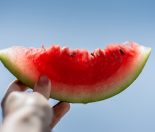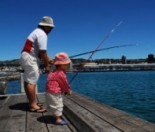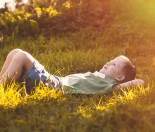Does jumping on a trampoline or playing in the sand pit help our children to read and write?
Often when we think of teaching children reading and writing skills we imagine reading lots of stories and encouraging children to write their name. The brain plays its part in children’s writing and reading but the body needs to be ready physically too. Little hands and eyes need developing ready for successful reading and writing. It’s important to remember that the physical play and development skills needed to achieve these are developed in the early years, right from birth.
Children’s bodies develop from head to toe, and from chest out to the hands. This is why having a strong healthy body is needed for those ‘fine’ or smaller muscles to be developed.
The wrist, hand and fingers need to develop dexterity to hold and control a pencil before letters and words can be written. If you start too early trying to get children to hold a pencil and write their name they can become frustrated and discouraged as they are not yet physically able to do it. First the hands and eyes need to develop through play and every day experiences.
Developing hands and fingers ready for reading and writing
For infants and toddlers
It starts with picking up their own food off the high chair moving from a whole fist grasp holding a banana to picking up raisins with their thumb and finger in a pincer grip.
Look for toys that can be shaken, twisted, turned and stacked. This could include medium sized blocks, rattles and instruments and stacking cups. You don’t need to buy expensive toys. Heuristic play using treasure ‘junk’ and focusing on the senses uses items from around the house and natural environment. Picking up leaves or playing with an old fashioned egg beater all develop the small muscles in the hands.
Play dough, water and sand are fantastic for healthy hands and developing flexibility and movement. As children pinch, roll and pat dough or dig in the sand with their hands they are using all their fingers and hands. They are often too using tools such as spades and rolling pins.
Painting with both hands and brushes. Using a paint brush mimics a lot of the physical skills needed for writing so art in collage is helping prepare the body for learning.
Peg puzzles are great for developing the pincer grip used in writing.
Crawling and rolling are so important as they develop cross patterns where one side of the body is doing something different to the other side. With crawling opposite arms and legs are used
For preschoolers
The above activities can all be adjusted for preschoolers too.
Threading games – fantastic for hand to eye coordination and also small muscles skills.
Puzzles – Great for focusing close up on objects and also physically in picking up and placing the pieces.
Getting dressed with buttons and zips – lots of dexterity in the hands is used as children learn to do up their own jackets and buttons.
Smaller blocks or lego to get fingers and hands twisting and moving.
Use both right and left hands for throwing a ball or in music and movement with ribbons and balloons. Make a line on the floor and jump from side to side back and forth.
Play games such as hopscotch and skipping.
Gardening and cooking with you is a fun way to share an interest together and enhance development.
Eyes need to be healthy too
If you think about it when you read your eyes need to go from one side of the page to the other tracking and keeping in line with the words on the page. Visual tracking is the skill of eyes being able to accurately follow an object or with reading follow across the page. The eyes are able to move freely while the head is still.
Hand eye coordination is needed for copying words from the board onto a page.
Peripheral vision helps the eyes to see the whole page allowing for easier and faster reading.
For infants
Eyes get stronger when the eyes are moving but the head is still.
Alternate feeding on different sides and move their cot or bassinet through the week so there are different things to look at and focus on.
Roll a ball back and forth to your sitting infant to track and follow.
Infants will naturally try to focus on your face as you sing and talk to them.
Gentle swinging and swaying movements help your baby to learn to focus during movement.
For toddlers
Blowing bubbles to watch and the pop.
Noticing and focusing on objects from different distance such as a bird in a tree or a plane up in the sky. Healthy eyes have a balance of close up vision and far away.
Fly a kite to follow with their eyes.
Use finger puppets and move them to tell a story.
Physical play such as being on a see-saw or swing helps the eyes and brain to link together and focus.
Point at objects and pictures in books.
Preschoolers
Jumping on a trampoline is great for healthy eyes as children need to coordinate their moving body up and down while they are still looking at their surroundings.
Roll down a hill as again the body is moving so vision adjusts.
Play skittles. This could be lining up blocks and the rolling a ball to knock them over.
Hanging washing on the line.
Carpentry using hammers and nails
Looking for hidden objects in books or in real life.
Vision and memory. Have ten objects on a tray. Look at them for ten seconds and then cover them and see how many you can remember.
Possible signs of vision problems
Seek further advice if your child…..
- Tilts their head to one side to look at things.
- Holds objects up close to her face to look at them.
- Squints, blinks or rubs their eyes often.
- If they go cross-eyed sometimes or one eye wanders or seems misaligned.
- Complains of sore eyes or head at the end of the day.
- Sensitivity to light.
This is a list of some of the symptoms to look out for. You will get further information from your Plunket nurse, family doctor or optometrist.
The above activities are some of the ways in which our Footsteps kaiako encourage children to be physically active, developing the hands and fingers ready for reading and writing. It is these physical skills as well as the brain that play an important part in healthy development during the early years.







